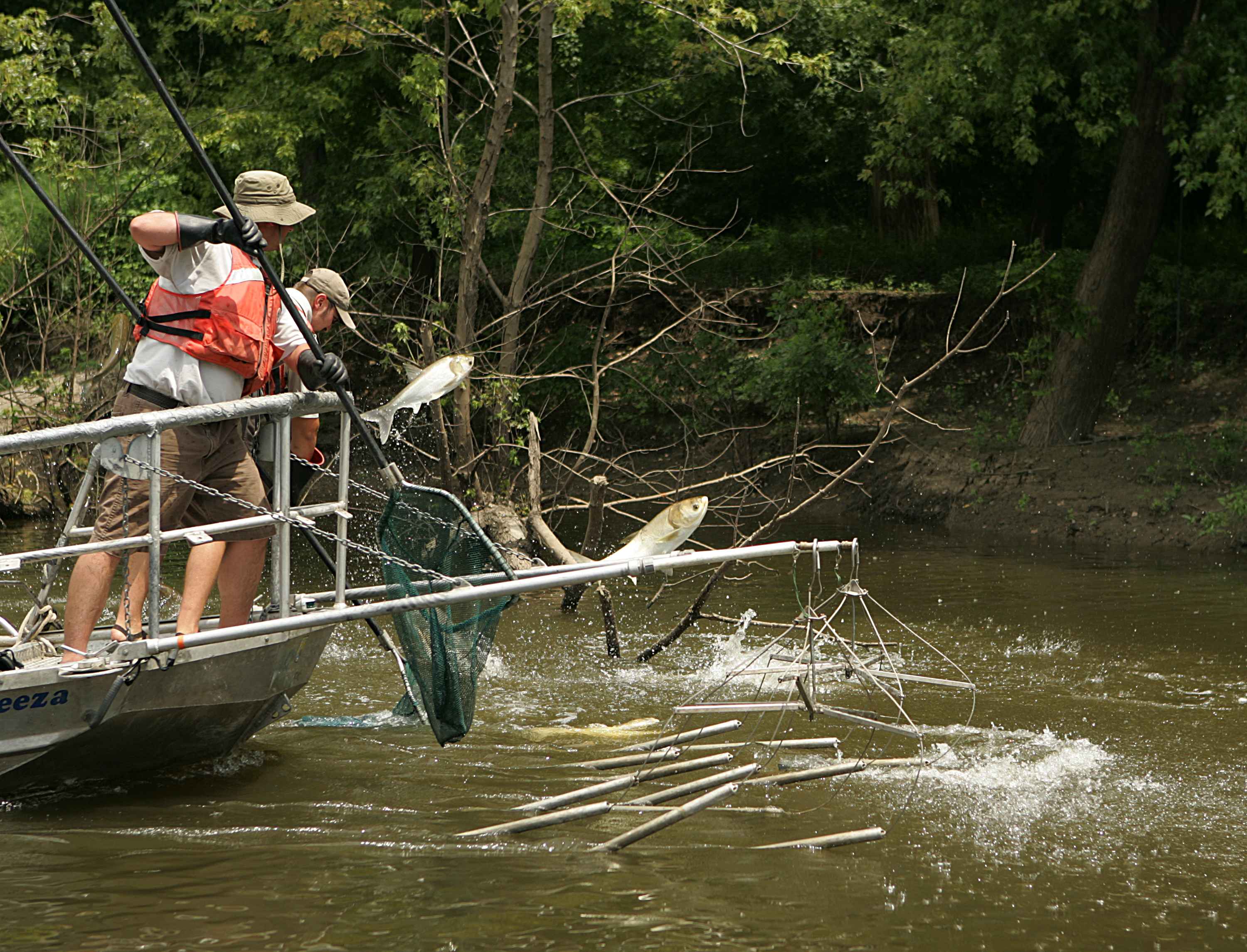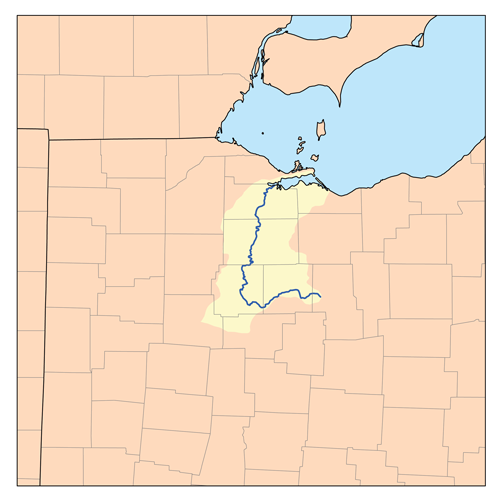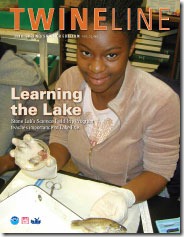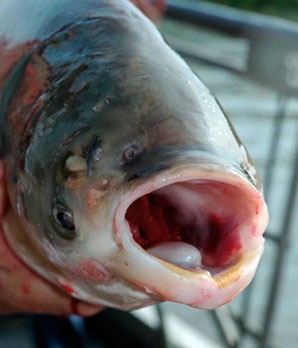First Evidence of Carp Breeding Near Lake Erie
2
Workers with the U.S. Fish and Wildlife Service electrofish for asian carp (Credit: U.S. Fish and Wildlife Service via Wikimedia Commons)
After catching four grass carp in Ohio’s Sandusky River, scientists at the U.S. Geological Survey set out to determine their origins. Were they simply released? Or had they grown up there?
There were clues to follow up on. Age-determination techniques helped tell that the fish were more than one year old. Chromosomal evidence also alluded to their past. But it was earbones that solved the mystery in the end. Their findings have serious implications for the future of the Great Lakes Basin, long in a battle to keep invasive carp from making their home there.
All four grass carp were older than one year. They likely wouldn’t have reached that age in a fishery. And they weren’t found in their most likely destination: private ponds where they’re stocked for algae control after being sterilized.
The carp can be sterilized in a lab, but “you still have to check them all,” said Duane Chapman, research fish biologist at the USGS. “One-hundred thousand young can come out of one female. They all look the same, so you have to individually go through them, sort out the triploid status.”
A triploid carp is one that has an extra chromosome in its DNA, a feature of those that have been sterilized. The opposite is a diploid carp, which has no extra chromosome.
This sterilization process, which involves pressure-shocking the fish in a lab, causes nuclei in the fishes’ cells to change size. By looking at these cells, researchers can determine if the fish are unable to reproduce or if they are fertile – these carp, they found, could spawn. At least two of the four were diploid.

Map of the Sandusky River watershed based on data from the U.S. Geological Survey (Credit: Kmusser via Wikimedia Commons)
Next the scientists looked at earbones in the fish. These bones, called otoliths, have a crystalline structure consisting of calcium layers. These layers can be studied to determine a fish’s age and the composition of the water that it has lived in.
The otoliths were removed from the fish, sliced and polished by a team at Bowling Green State University in collaboration with the Great Lakes Institute of Environmental Research at the University of Windsor. A laser oblation spectrophotometer shoots a pinpointed beam at the bones. It vaporizes the surface of the otolith down the middle, a little at a time, says Chapman. Each time it does, 3,000 measurements can be taken over the 4 millimeter length of the earbone.
The calcium-heavy crystalline structure of the otolith bones analyzed were found to contain concentrations of strontium, an element the Sandusky River contains in naturally high amounts due to bedrock that helps form its banks.
“We were able to determine that they hadn’t left the river,” said Chapman. So the Sandusky, long thought to be a river averse to carp spawning because of its short length, had supported the fish from birth.
Chapman assisted on a risk assessment for the Lake Erie Rivers in 2007, and the Sandusky River was not listed as a potential spawning site at that time because of its short length. But the USGS Illinois Water Science Center took new biological information developed by Chapman in 2011, and combined them with physical parameters of the Maumee and Sandusky River to model the adequacy of the rivers for reproduction by Asian carps. While the 2007 risk assessment found that the Sandusky River was at low risk for carp infestation, the model found it could provide a better spawning ground than the Maumee.
“We really do need to do these models, because everyone thought the Maumee would be the best river in the Great Lakes for Asian carp reproduction,” said Chapman. “But when we ran the models, it wasn’t nearly as good as the Sandusky, where we actually found grass carp were reproducing.”
Full results of the study are published in the Journal of Great Lakes Research.












[…] in the Grand River near Lake Erie. The same year, the U.S. Geological Survey published a report on reproducing grass carp in Ohio’s Sandusky River, which drains to Lake […]
[…] if they make it into Lake Erie, according to a release from the agency. The findings come after another study that found evidence of carp breeding near the Great Lake in […]